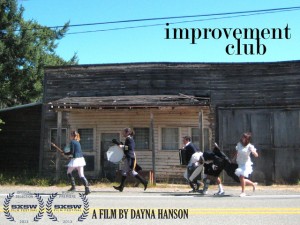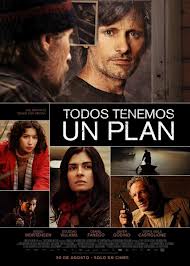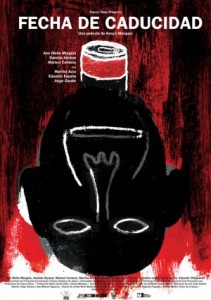The San Diego Latino Film Festival is running through its final lap, and there is still an opportunity to sample many a film before the fest concludes this weekend on Sunday, March 17th.
Here are some of the films playing at SDLFF that I watched. The diversity in the scope of these films speaks to the richness of the festival catalog.
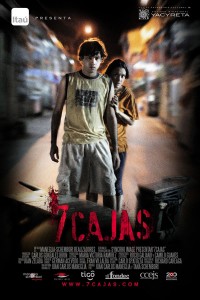 7 CAJAS (7 BOXES, Paraguay) This was one of the highlights of my Toronto Film Festival experience last year (original review here). Here is the premise of 7 BOXES (directed by Juan Carlos Maneglia and Tana Schembori): in a teeming shanty market in Paraguay, seventeen year old Victor is one of many people making a living by carting merchandise on wheelbarrows through the maze of busy streets. One evening he is asked to deliver 7 wooden boxes to a location he will be informed of at a later time. Hoping to finally be able to afford the used cell-phone he has been lusting after, he accepts the task. And thus begins what will be the breathless remainder of the film as Victor realizes that there are many who will go to any extreme to get their hands on the 7 boxes. If this film sounds like a Premium Rush knock-off, let me assure you this is a far smarter, grittier and layered movie that is as close-to-the-ground unpolished and hard-scrabble as they get. The more relevant comparison would be withRun Lola Run which also featured a protagonist persistently on the run against time. 7 Boxes features an ingenious plot (wait till you find out what’s in the boxes) that expertly weaves together more than a dozen characters who interact in unexpected ways in a story that is as labyrinthine as the market streets through which Victor dashes with the seven wooden crates tethered to his wheelbarrow. Every actor here achieves a reality to their character that makes it impossible to imagine them in other roles. We have seen movies like this before, but ultimately what elevates this film is the notes of cleverness that are liberally scattered throughout; this is the work of unquestionable talent. To give an example, there is a scene in the film where in the middle of his running, running, running, Victor stops outside an electronics shop to catch his breath. There are multiple televisions in the storewindow, each fitted to a camera. As he sees his face projected through multiple perspectives he can’t help but stare, probably seeing his face from so many angles for the first time in his life. Something terrible has happened immediately before this scene, but Victor stops for a moment to stare. To be a kid. To be a human being, suddenly fascinated by something simple. It is touches such as this which demonstrate that this is the work of a gifted filmmaker. All of the pieces of the plot ultimately snap together with a pleasing click, and the movie has a final scene so perfectly rendered it had me cheering at the screen. To discover a movie like this is the reason one goes to film festivals. Unpredictable, frenetic and utterly entertaining, this folks, is how you do it.
7 CAJAS (7 BOXES, Paraguay) This was one of the highlights of my Toronto Film Festival experience last year (original review here). Here is the premise of 7 BOXES (directed by Juan Carlos Maneglia and Tana Schembori): in a teeming shanty market in Paraguay, seventeen year old Victor is one of many people making a living by carting merchandise on wheelbarrows through the maze of busy streets. One evening he is asked to deliver 7 wooden boxes to a location he will be informed of at a later time. Hoping to finally be able to afford the used cell-phone he has been lusting after, he accepts the task. And thus begins what will be the breathless remainder of the film as Victor realizes that there are many who will go to any extreme to get their hands on the 7 boxes. If this film sounds like a Premium Rush knock-off, let me assure you this is a far smarter, grittier and layered movie that is as close-to-the-ground unpolished and hard-scrabble as they get. The more relevant comparison would be withRun Lola Run which also featured a protagonist persistently on the run against time. 7 Boxes features an ingenious plot (wait till you find out what’s in the boxes) that expertly weaves together more than a dozen characters who interact in unexpected ways in a story that is as labyrinthine as the market streets through which Victor dashes with the seven wooden crates tethered to his wheelbarrow. Every actor here achieves a reality to their character that makes it impossible to imagine them in other roles. We have seen movies like this before, but ultimately what elevates this film is the notes of cleverness that are liberally scattered throughout; this is the work of unquestionable talent. To give an example, there is a scene in the film where in the middle of his running, running, running, Victor stops outside an electronics shop to catch his breath. There are multiple televisions in the storewindow, each fitted to a camera. As he sees his face projected through multiple perspectives he can’t help but stare, probably seeing his face from so many angles for the first time in his life. Something terrible has happened immediately before this scene, but Victor stops for a moment to stare. To be a kid. To be a human being, suddenly fascinated by something simple. It is touches such as this which demonstrate that this is the work of a gifted filmmaker. All of the pieces of the plot ultimately snap together with a pleasing click, and the movie has a final scene so perfectly rendered it had me cheering at the screen. To discover a movie like this is the reason one goes to film festivals. Unpredictable, frenetic and utterly entertaining, this folks, is how you do it.
 DE JUEVES A DOMINGO (THURSDAY TILL SUNDAY, Chile) I had a chance to catch this at the 2012 Los Angeles Film Festival; original review here. Helmed by first time director Domingo Sotomayor Castillo) this Chilean film covers a four-day road trip (hence the film title) taken by a couple, their daughter, and young son. The movie is seen, for the most part, through the eyes of the teenaged daughter. Approaching neorealism, this is a work of stark austerity, which may tempt a viewer to assign it hastily to the genre of films where nothing happens. The studiedly documentary feel, the naked abandon of traditional plotting and story arc, and the patient, unrushed, lingering of the camera over these four characters, may at first seem unsettling. But when one stops trying to deduce the film on a minute by minute basis, one settles into its rhythms. And you realize this is a film that trusts the intelligence of the viewer enough to not provide easy answers. And demands that the viewers bring their own experiences to glean what they will from this story. Slowly the cracks in the relationships come into focus, sometimes ever so briefly. More than anything else the movie evokes a sense of nostalgia – about a time, when being a child meant not having the tools to decipher what the behavior of the adults signified. The young daughter is never precocious, or all knowing, and the actor who plays her (Santi Ahumada) brings an effortless naturalism that belies any knowledge of a camera being around her, and captures all the complexities of being a teenager: distracted, self-involved, impatient but always well-meaning. In the Q and A after the film, the director revealed that the four-year old who played the younger brother was obviously not up to acting in the traditional sense, and the other actors learned to ad-lib and work around his natural behavior on camera. No wonder the film evokes a feeling of purity about it.
DE JUEVES A DOMINGO (THURSDAY TILL SUNDAY, Chile) I had a chance to catch this at the 2012 Los Angeles Film Festival; original review here. Helmed by first time director Domingo Sotomayor Castillo) this Chilean film covers a four-day road trip (hence the film title) taken by a couple, their daughter, and young son. The movie is seen, for the most part, through the eyes of the teenaged daughter. Approaching neorealism, this is a work of stark austerity, which may tempt a viewer to assign it hastily to the genre of films where nothing happens. The studiedly documentary feel, the naked abandon of traditional plotting and story arc, and the patient, unrushed, lingering of the camera over these four characters, may at first seem unsettling. But when one stops trying to deduce the film on a minute by minute basis, one settles into its rhythms. And you realize this is a film that trusts the intelligence of the viewer enough to not provide easy answers. And demands that the viewers bring their own experiences to glean what they will from this story. Slowly the cracks in the relationships come into focus, sometimes ever so briefly. More than anything else the movie evokes a sense of nostalgia – about a time, when being a child meant not having the tools to decipher what the behavior of the adults signified. The young daughter is never precocious, or all knowing, and the actor who plays her (Santi Ahumada) brings an effortless naturalism that belies any knowledge of a camera being around her, and captures all the complexities of being a teenager: distracted, self-involved, impatient but always well-meaning. In the Q and A after the film, the director revealed that the four-year old who played the younger brother was obviously not up to acting in the traditional sense, and the other actors learned to ad-lib and work around his natural behavior on camera. No wonder the film evokes a feeling of purity about it.
 EL ULTIMO ELVIS (THE LAST ELVIS, Argentina)Armando Bo, the first-time director of this film which also screened during the 2012 Los Angeles Film Festival (original review here), has no trouble coaxing an altogether believable performance out of Margarita Lopez, who plays in this film, the young daughter of an Elvis Presley impersonator in Argentina. But it is John McInerny, playing Carlos, the lead, who impresses most by managing to transcend the kitschiness associated with celebrity impersonators. He plays a blue collar worker struggling to make ends meet while dealing with an ex-wife who does not think much of him, and a daughter who is uncommunicative. On the side, he plays Elvis tunes at local gigs, and the film makes it clear from the very first scene that this is not a man lacking in talent. His single-minded admiration for Elvis is so complete as to be entirely immune to irony. Or pity. Or perverseness. This man simply believes in Elvis. And it is to the director and lead actor’s credit that this character never becomes laughable. Carlos is 42 years old, the same age as when Elvis died, and things spiral even further out of control as a set of events leave him having to become the primary caretaker of his distant daughter. As he labors to stay afloat, the movie quietly shifts into an uncompromising character study of a man under duress. And the final scenes of the film, invested with a sense of inevitability, cunningly hint at a mystery left for the viewer to solve. The kind that should trigger a reconsideration of all that has transpired earlier in the film. The day before the screening of the movie, we were fortunate to run into the completely disarming young director of the film, Armando Bo (who previously co-wrote the film Biutiful). Please come see my film tomorrow and tell me afterward whether you liked it, he said. I have been doing one better than that, Mr Bo. I have been telling anyone who will listen to find a way to see this uncommonly accomplished film. And I can hardly wait for what Armando Bo does next.
EL ULTIMO ELVIS (THE LAST ELVIS, Argentina)Armando Bo, the first-time director of this film which also screened during the 2012 Los Angeles Film Festival (original review here), has no trouble coaxing an altogether believable performance out of Margarita Lopez, who plays in this film, the young daughter of an Elvis Presley impersonator in Argentina. But it is John McInerny, playing Carlos, the lead, who impresses most by managing to transcend the kitschiness associated with celebrity impersonators. He plays a blue collar worker struggling to make ends meet while dealing with an ex-wife who does not think much of him, and a daughter who is uncommunicative. On the side, he plays Elvis tunes at local gigs, and the film makes it clear from the very first scene that this is not a man lacking in talent. His single-minded admiration for Elvis is so complete as to be entirely immune to irony. Or pity. Or perverseness. This man simply believes in Elvis. And it is to the director and lead actor’s credit that this character never becomes laughable. Carlos is 42 years old, the same age as when Elvis died, and things spiral even further out of control as a set of events leave him having to become the primary caretaker of his distant daughter. As he labors to stay afloat, the movie quietly shifts into an uncompromising character study of a man under duress. And the final scenes of the film, invested with a sense of inevitability, cunningly hint at a mystery left for the viewer to solve. The kind that should trigger a reconsideration of all that has transpired earlier in the film. The day before the screening of the movie, we were fortunate to run into the completely disarming young director of the film, Armando Bo (who previously co-wrote the film Biutiful). Please come see my film tomorrow and tell me afterward whether you liked it, he said. I have been doing one better than that, Mr Bo. I have been telling anyone who will listen to find a way to see this uncommonly accomplished film. And I can hardly wait for what Armando Bo does next.
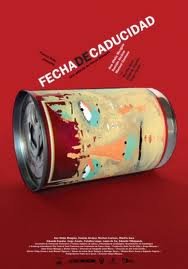 FECHA DE CADUCIDAD (EXPIRATION DATE, Mexico). More than anything else, I admired the underlying darkly morbid tone of this film. You watch most of it with a sense of dread, even as you are faced with acrid humor at every corner. The film reminded me of Delicatessen in terms of that mix of the mythic and the gruesome and for its regard for characters that are deeply damaged. I also liked the structure of the film which in the second half revisits the same events from the individual perspective of the three main characters. And finally I was completely taken by the amazing performance from And Ofelia Murguia, who plays the mother. What an actor! Her wordless reactions single-handedly kept the film compelling through the first half, and she was utterly believable at every step. In that way, the film also reminded me of the Korean movie Mother from a few years ago, which was also about a woman who will go to any length to find out what happened to her son. This film is being endorsed by the San Diego Film Critics Society, which will host a Q and A sessions after the 5 PM screening tomorrow, Saturday March 16th.
FECHA DE CADUCIDAD (EXPIRATION DATE, Mexico). More than anything else, I admired the underlying darkly morbid tone of this film. You watch most of it with a sense of dread, even as you are faced with acrid humor at every corner. The film reminded me of Delicatessen in terms of that mix of the mythic and the gruesome and for its regard for characters that are deeply damaged. I also liked the structure of the film which in the second half revisits the same events from the individual perspective of the three main characters. And finally I was completely taken by the amazing performance from And Ofelia Murguia, who plays the mother. What an actor! Her wordless reactions single-handedly kept the film compelling through the first half, and she was utterly believable at every step. In that way, the film also reminded me of the Korean movie Mother from a few years ago, which was also about a woman who will go to any length to find out what happened to her son. This film is being endorsed by the San Diego Film Critics Society, which will host a Q and A sessions after the 5 PM screening tomorrow, Saturday March 16th.
LA PLAYA DC (Columbia). It is difficult to do good coming-of-age films. And I appreciated the spare, almost documentary like treatment of this material. It is also an opportunity to see a part of the world, that we are seldom exposed to in cinema: that of life in the shanties in Bogota. I was fascinated by the entire subculture of men patterning their hair as a way of expression in an otherwise brutally criminal society. This film could have been undone if it had made the slightest concession to sentimentality, but it does not. In many ways the film is just a character study of someone growing up in an environment most of us are unfamiliar with, in the underbelly of society where death is matter of fact, and criminality has taken its hold even within the very young. I like how the film settles in its last act, of being about a teenager who hesitantly finally finds a place for himself within the confines of an environment he is unable to change, or escape from.
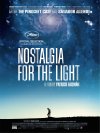 NOSTALGIA FOR THE LIGHT (Chile) This film it something so altogether its own. It is also one of the most successful documentaries I have seen. What it covers is something that I had no prior knowledge of, something that has little to do with my own life experiences. And yet, the deep and authentic emotional resonance of the movie cannot be denied. It starts off by focusing on the largest density of observatories in the world that have been built in the deserts in Chile, in the middle of nowhere. The uncommonly dry desert conditions and the lack of humidity or neighboring light, make this region one of the few places in the world from which to most clearly observe the skies and the astonomical bodies within. Every astronomer in the world (and many aim to make their way to the Chilean observatories) is trying to decipher the origin of the world we live in by studying the imprint of the galaxies around us. Deeply philosphical, the film achieves the altogether impossible task of making metaphysical inquiry glow with clarity and wonder. How fascinating to find, as is mentioned in the film, that the calcium in our bones is the same calcium that was present at the formation of our planet. We are literally the universe. As it turns out the film is interested in not just the scientists in these observatories, but also on another group of individuals who happen within the region. For the past twenty, thirty years even, many women have been wandering these deserts, in search of human remains. Human remains of their loved ones, brothers, sons, husbands who disappeared mysteriously during the Pinochet regime. The political backstory informs us that tens of thousands were quietly executed and their bodies scattered around the desert. Every once in a while a body is recovered, the intense, dry heat preserving clothing and shoes on the skeletal results. Unable to find closure from the disappearance of a loved one, these women set out on regular pilgrimages in the hopes of locating evidence within these deserts. In the skies of these deserts, there are those who are trying to find the origin of humankind, and in the sands are those that are trying to locate the end of human lives. All of which makes this is a gently, powerfully devastating film.
NOSTALGIA FOR THE LIGHT (Chile) This film it something so altogether its own. It is also one of the most successful documentaries I have seen. What it covers is something that I had no prior knowledge of, something that has little to do with my own life experiences. And yet, the deep and authentic emotional resonance of the movie cannot be denied. It starts off by focusing on the largest density of observatories in the world that have been built in the deserts in Chile, in the middle of nowhere. The uncommonly dry desert conditions and the lack of humidity or neighboring light, make this region one of the few places in the world from which to most clearly observe the skies and the astonomical bodies within. Every astronomer in the world (and many aim to make their way to the Chilean observatories) is trying to decipher the origin of the world we live in by studying the imprint of the galaxies around us. Deeply philosphical, the film achieves the altogether impossible task of making metaphysical inquiry glow with clarity and wonder. How fascinating to find, as is mentioned in the film, that the calcium in our bones is the same calcium that was present at the formation of our planet. We are literally the universe. As it turns out the film is interested in not just the scientists in these observatories, but also on another group of individuals who happen within the region. For the past twenty, thirty years even, many women have been wandering these deserts, in search of human remains. Human remains of their loved ones, brothers, sons, husbands who disappeared mysteriously during the Pinochet regime. The political backstory informs us that tens of thousands were quietly executed and their bodies scattered around the desert. Every once in a while a body is recovered, the intense, dry heat preserving clothing and shoes on the skeletal results. Unable to find closure from the disappearance of a loved one, these women set out on regular pilgrimages in the hopes of locating evidence within these deserts. In the skies of these deserts, there are those who are trying to find the origin of humankind, and in the sands are those that are trying to locate the end of human lives. All of which makes this is a gently, powerfully devastating film.
 POST TENEBRAS LUX (AFTER DARKNESS LIGHT, Mexico) The divisive director Carlos Reygadas (Japon, Battle In Heaven, Still Light) has made a name for himself for constructing films that are amorphous, unstructured, meditative, and often wordless for long periods of time. Like Michael Haneke, Raygadas’ films appear to be offered as a puzzle to the audience, and the director is not one to offer much by way of clues. His films are immersive, without tether, sexually graphic, and bearing no submission to the traditional demands of plot. Highly polarizing, these are films that demand introspection and vigorous debate after a viewing. Post Tenebras Lux (from the Latin, for ‘Light, After Darkness’) is no exception. It’s a fool’s errand to try and describe what the film is about. An affluent couple move to rural Mexico, with their two children (played by the director’s own kids). What seems like a veritable Eden (there is no denying the visual brilliance of the first fifteen or so minutes of the movie, featuring the young daughter in a rapturous state of being around the natural splendor of her environs), soon becomes a setting for a tentative playing out of class struggle between the ‘have’s who have moved in, and the ‘have not’s who are the residents of this seemingly idyllic location. The movie resolutely disavows chronology, and as the film plays out, it becomes increasingly unclear as to what is real, what is imagined, and what might simply be the delusional stream of consciousness of a dying man. This should have been frustrating, and I suspect the film will test the patience of many. But I couldn’t help being pulled into the tidal languor of the movie. Unlike say The Tree Of Life, to which I had a greater difficulty surrendering, this movie elicited in me, a quiet wonder. I willingly took the journey, fully aware that it may not have a destination at all. What to make of the animated red devil-like creature that shows up in two scenes of this otherwise rigidly realistic movie? Are the abruptly set rugby scenes in an English boy’s school, simply an autobiographical concession to the director’s own experiences, or is one of the boys in those scenes meant to be the grown up child of the couple in the film? Trying to deduce the answers to these questions is the movie’s own reward. What should have been insufferable and indulgent, was surprisingly not. Like Holy Motors from last year (compared to which, this film is far more accessible) I am glad that this too is what cinema can be.
POST TENEBRAS LUX (AFTER DARKNESS LIGHT, Mexico) The divisive director Carlos Reygadas (Japon, Battle In Heaven, Still Light) has made a name for himself for constructing films that are amorphous, unstructured, meditative, and often wordless for long periods of time. Like Michael Haneke, Raygadas’ films appear to be offered as a puzzle to the audience, and the director is not one to offer much by way of clues. His films are immersive, without tether, sexually graphic, and bearing no submission to the traditional demands of plot. Highly polarizing, these are films that demand introspection and vigorous debate after a viewing. Post Tenebras Lux (from the Latin, for ‘Light, After Darkness’) is no exception. It’s a fool’s errand to try and describe what the film is about. An affluent couple move to rural Mexico, with their two children (played by the director’s own kids). What seems like a veritable Eden (there is no denying the visual brilliance of the first fifteen or so minutes of the movie, featuring the young daughter in a rapturous state of being around the natural splendor of her environs), soon becomes a setting for a tentative playing out of class struggle between the ‘have’s who have moved in, and the ‘have not’s who are the residents of this seemingly idyllic location. The movie resolutely disavows chronology, and as the film plays out, it becomes increasingly unclear as to what is real, what is imagined, and what might simply be the delusional stream of consciousness of a dying man. This should have been frustrating, and I suspect the film will test the patience of many. But I couldn’t help being pulled into the tidal languor of the movie. Unlike say The Tree Of Life, to which I had a greater difficulty surrendering, this movie elicited in me, a quiet wonder. I willingly took the journey, fully aware that it may not have a destination at all. What to make of the animated red devil-like creature that shows up in two scenes of this otherwise rigidly realistic movie? Are the abruptly set rugby scenes in an English boy’s school, simply an autobiographical concession to the director’s own experiences, or is one of the boys in those scenes meant to be the grown up child of the couple in the film? Trying to deduce the answers to these questions is the movie’s own reward. What should have been insufferable and indulgent, was surprisingly not. Like Holy Motors from last year (compared to which, this film is far more accessible) I am glad that this too is what cinema can be.

